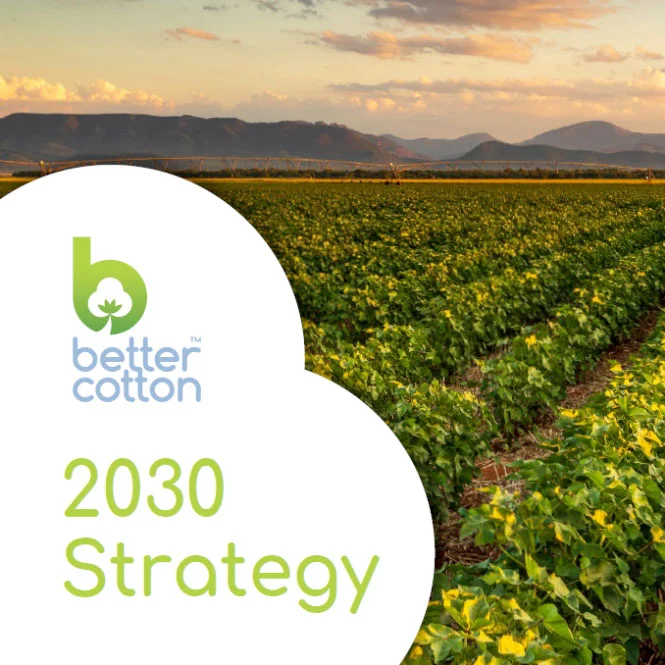- Who we are
- What we do
In just over 10 years we have become the world’s largest cotton sustainability programme. Our mission: to help cotton communities survive and thrive, while protecting and restoring the environment.
- Where we grow
Better Cotton is grown in 22 countries around the world and accounts for 22% of global cotton production. In the 2022-23 cotton season, 2.13 million licensed Better Cotton Farmers grew 5.47 million tonnes of Better Cotton.
- Our impact
- Membership
Today Better Cotton has more than 2,700 members, reflecting the breadth and diversity of the industry. Members of a global community that understands the mutual benefits of sustainable cotton farming. The moment you join, you become part of this too.
- Associate Membership
- Civil Society Membership
- Producer Organisation Membership
- Retailer and Brand Membership
- Supplier and Manufacturer Membership
- Find Members
- Member Monitoring
- Better Cotton Platform
- myBetterCotton
- Resources – Better Cotton Conference 2022
- Complaints
- Whistleblowing
- Safeguarding
- Get Involved in the Better Cotton Programme
- Thank you for contacting us
- Better Cotton’s Data Privacy Policy
- Log in
- Members’ Area
- Request for Proposals
- Better Cotton Cookie Policy
- Web Reference
- Measuring Cotton Consumption
- How to Implement the Chain of Custody Standard
- Resources – Better Cotton Conference 2023
- Certification Bodies Old
- Latest
- Sourcing
- Latest
The founding premise of Better Cotton is that a healthy sustainable future for cotton and the people that farm it is in the interests of everyone connected with it.
Let us help you find what you’re looking for
Results for {phrase} ({results_count} of {results_count_total})Displaying {results_count} results of {results_count_total}
In 2019, 150 of the world’s most recognised retailers and brands collectively sourced more than 1.5 million metric tonnes of cotton as “Better Cotton’ – that is enough cotton to make approximately 1.5 billion pairs of jeans. The retailers, who are all members of the Better Cotton Initiative (BCI), hit a new sourcing milestone and sent a clear signal to the market that there is increasing demand for more sustainably grown cotton.
Uptake1 of Better Cotton – cotton produced by licensed BCI Farmers in line with the Better Cotton Principles and Criteria – increased by 40% on the previous year. The volume sourced by BCI’s 150 Retailer and Brand Members in 2019 represents 6% of global cotton production2. By increasing sourcing commitments year-on-year and integrating Better Cotton into their sustainable sourcing strategies, BCI Retailer and Brand Members are driving demand for more sustainable cotton production worldwide.
Long-standing BCI Member Decathlon shared their thoughts on BCI and Better Cotton; ”While physical Better Cotton is not traceable to the end-product, what matters is that the funds channelled through BCI end up contributing to farmer training and expanding the network of cotton farmers who are improving their livelihoods, while protecting and restoring the environment.Decathlon has a target to source 100% more sustainable cotton by 2020 – this is a combination ofBetter Cotton together with organic and recycled cotton. This commitment has generatedahigh level of motivation internally at Decathlon. The BCI Team has also always been supportive of our journey, listeningto our needs and quickly responding to any challengeswe met,” says Nagy Bensid, Director Yarns and Fibres, Decathlon
BCI’s demand-driven funding model means that retailer and brand sourcing of Better Cotton directly translates into increased investment in training for cotton farmers on more sustainable practices. For example, in the 2018-19 cotton season, Retailer and Brand Members, public donors (DFAT) and IDH (the Sustainable Trade Initiative) contributed more than ‚Ǩ11 million to field-level projects, enabling more than 1.3 million cotton farmers in China, India, Pakistan, Turkey, Tajikistan and Mozambique to receive support, capacity building and training.3
BCI Supplier and Manufacturer Members also play a crucial role in increasing uptake as they bridge the gap between Better Cotton supply and demand. In 2019, suppliers and manufacturers sourced more than two million metric tonnes of cotton as Better Cotton, ensuring that there was enough supply available to meet retailers’ needs.
The retailers and brands, cotton traders and spinners who sourced the largest volumes of Better Cotton in 2019 will be revealed in the 2019 Better Cotton Leaderboard, launching at the 2020 Global Cotton Sustainability Conference in June. You can view the 2018 Leaderboard here.

Notes


